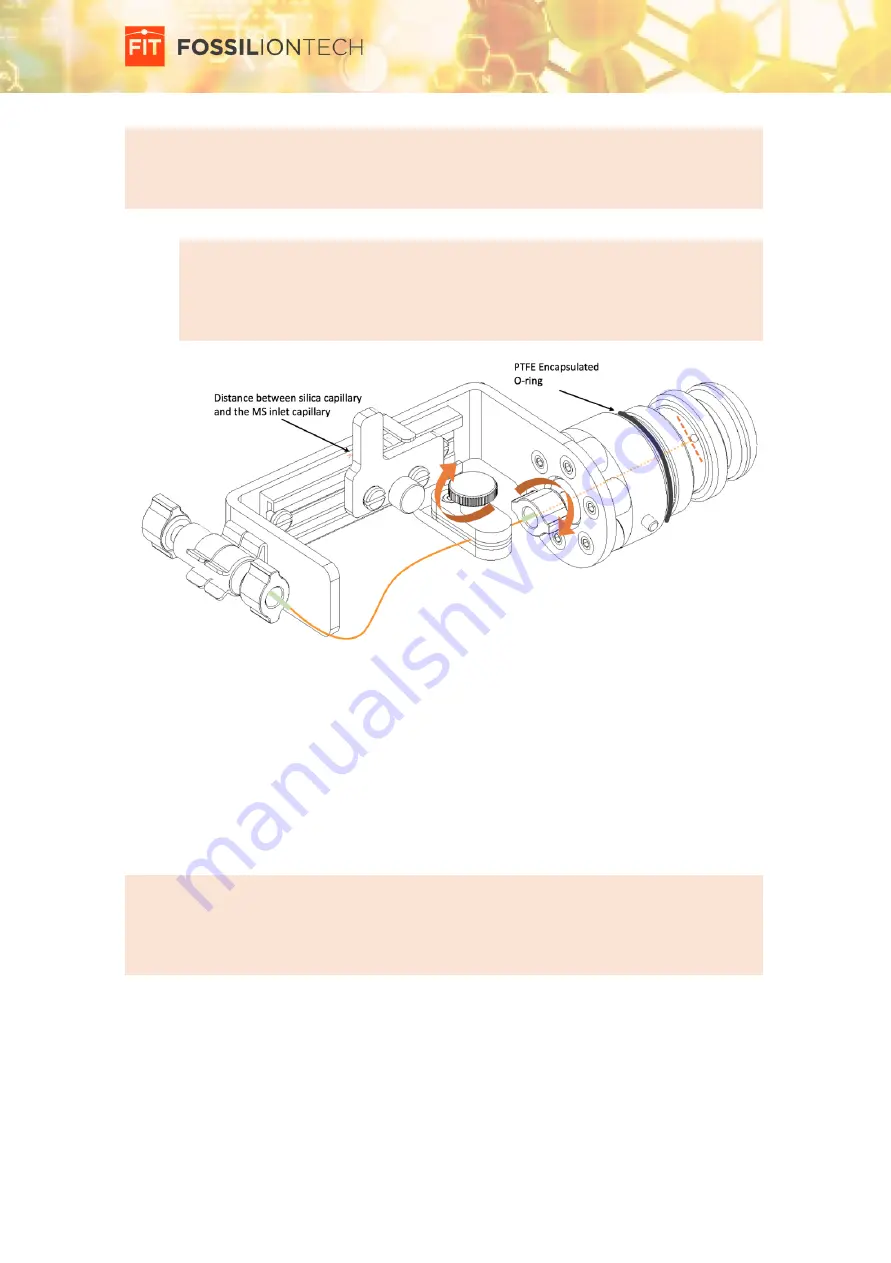
Page 20 of 34
SUPER SESI, by FIT
User manual, Revision 2.0
TIPS & TRICKS
. Take your time to introduce the silica capillary through the Teflon capillary. The
tip of the silica capillary is sharpened and it is very fragile. Make sure that all movements
are very gentle and that the tip of the silica capillary does not touch any metal or PEEK
parts.
IMPORTANT NOTE
The Teflon capillary must be clean and free from any solid residue
that could get attached to the tip of the silica capillary. This would affect the stability of
the electrospray. If you are not sure whether there might be some residues in your
Teflon capillary, unscrew the fitting 1, clean the Teflon capillary with high purity
solvents, or replace it with a new one, and put it back in the electrospray probe.
Figure 17. Positioning the silica capillary in the electrospray probe.
In order to reference the position of the silica capillary, unlock the capillary positioner, align the
reference sign of the capillary positioner and the electrospray probe handgrip, and lock it in this
position. Then unlock the capillary lock and the Upchurch fitting 1 (they should be unlocked for
the installation of the silica capillary), slide the silica capillary through the capillary lock, and
align it about the plane defined by the orifices of the electrospray probe, as shown in the figure
17.
Once the silica capillary is positioned, tighten the capillary lock to fasten the capillary, and gently
tighten the Upchurch fitting 1.
TIPS & TRICKS
. The fitting 1 should be sufficiently tight to maintain a sealed passage, but
sufficiently loosen to allow for the silica capillary to slide through the Teflon capillary.
To adjust the tightness of this fitting, unlock the capillary positioner lock and slide the
capillary positioner. You should note some friction, but the silica capillary should be able
to slide without buckling.
Finally, insert the electrospray probe in the ionization chamber and lock it. Insert the flat end
of the silica capillary into the vial holder and lock the fitting-2.















































